Did you know that car horns have been around for over a century? They were first introduced in the late 19th century as a safety device, ensuring that a vehicle's presence was known to pedestrians and other drivers. Since then, car horns have evolved and diversified to meet various needs and preferences.
Today, car horn sounds serve as crucial communication tools on the road. They are used to alert other drivers of potential dangers, signal frustration or anger, and even convey gratitude. In fact, a recent study found that car horns are used an average of 25 times per month by regular drivers.
One particularly recognizable car horn sound is the classic "honk." With a deep and loud tone, it is designed to grab attention and warn others of potential hazards. This horn is commonly used in emergency situations, such as when another vehicle is about to collide with yours or when a pedestrian unexpectedly crosses the street.
Another popular type of car horn sound is the "beep." This sound is often shorter and less intense than the honk, serving as a form of communication rather than an emergency alarm. Many drivers use a beep to politely alert someone ahead to start moving when a traffic light turns green, or to indicate their presence when passing through a blind spot on the highway.
For those seeking a more personalized touch, musical car horns offer a creative alternative. These horns can play a variety of catchy tunes, which can range from popular melodies to humorous sounds. While they may not have the same urgency or seriousness as traditional car horns, musical horns can be a fun and entertaining way to express oneself on the road.
Regardless of the type of car horn sound, it is essential to use them responsibly and considerately. Excessive use of horns can contribute to noise pollution and negatively impact the well-being of other drivers and pedestrians. Instead, use car horns as a last resort and only when necessary to ensure everyone's safety on the road.
Car horn sounds have come a long way since their invention, with various types and styles catering to different needs and preferences. As technology continues to advance, we can expect even more innovative and unique car horn sounds to hit the market. But remember, whether it's a honk, a beep, or a musical melody, use your car horn wisely to make the roads a safer and more harmonious place for all.
Different Types of Car Horn Sounds: Which Ones Are the Loudest and Most Effective?
Straight Horns
Straight horns are one of the most common types of car horns. They produce a loud and sharp sound that is easily recognizable on the road. Straight horns are typically used in everyday driving situations and are effective for alerting other drivers to your presence.
Air Horns
Air horns are popular among truck drivers and motorists who want an even louder sound. These horns use compressed air to create a powerful blast that can be heard from a great distance. Air horns are often used in large vehicles and emergency vehicles to grab attention and signal urgency.
Musical Horns
Musical horns offer a fun and distinctive way to communicate on the road. They are equipped with various musical tunes, such as popular songs or melodies, that play when the horn is activated. Musical horns are a popular choice among car enthusiasts who want to add a unique touch to their vehicles.
Electronic Horns
Electronic horns are a modern alternative to traditional car horns. They use electronic circuitry to generate different sounds, including traditional horn sounds, sirens, and even animal noises. Electronic horns offer versatility and customization options, allowing drivers to choose a sound that suits their personal style or preferences.
Quiet or Friendly Horns
Quiet or friendly horns are designed to be less aggressive and more polite compared to traditional car horns. These horns produce a softer sound, making them ideal for situations where a loud and jarring horn may not be appropriate. Quiet horns are often used in residential areas or for non-emergency situations.
Train Horns
Train horns, as the name suggests, imitate the distinctive sound of a train horn. These horns are incredibly loud and can be heard from a significant distance away. Train horns are favored by car enthusiasts who want a bold and attention-grabbing horn sound that sets them apart from the crowd.
- Straight horns are commonly used for everyday driving.
- Air horns are popular among truck drivers and emergency vehicles.
- Musical horns offer a fun and unique way to communicate on the road.
- Electronic horns provide versatility and customization options.
- Quiet or friendly horns produce a softer, less aggressive sound.
- Train horns imitate the loud and distinctive sound of a train.
According to a recent survey, the most popular type of car horn sound among motorists is the straight horn, with 45% of respondents preferring it. Air horns came in second place, with 30% of respondents favoring their powerful sound. Musical horns and electronic horns received 15% and 5% of the votes, respectively. Quiet or friendly horns and train horns were the least popular, each receiving only 2.5% of the votes.
https://youtube.com/watch?v=V5RHg4zCYQs
FAQ: Understanding Car Horns
1. What are the various auditory signals used by vehicles?
Vehicles rely on auditory signals to communicate and alert other road users. What are the common sounds you might encounter?
Car horns have diverse sonic cues that help drivers convey important messages while on the road. These distinct auditory signals ensure utmost safety and smooth driving experiences. Here are some commonly heard sounds when it comes to vehicles' sonic communication:
- Horn blares: These sharp, prolonged sounds emanate from the familiar horn button on the steering wheel. They are usually used to warn others of imminent danger or to grab their attention in critical situations.
- Beep beeps: Short and crisp, beep beeps are often employed to alert other drivers in crowded areas or while overtaking. They are relatively less intense than horn blares and aim to convey a friendly warning.
- Chirping sounds: Instead of a continuous honk, some vehicles produce a series of chirping sounds, often used as a greeting or to gently make others aware of their presence.
- Melodic tunes: Certain novelty horns emit melodic tunes, ranging from popular songs to whimsical tones, providing a unique touch to a vehicle's auditory communication.
Key information:
1. Car horns serve as crucial auditory signals.
2. Horn blares are utilized to warn others of danger.
3. Beep beeps are shorter, friendlier alerts used in crowded areas.
2. What is the purpose of horn honking on the road?
Car horns are integral to traffic safety, but what specific purposes do they serve?
Horn honking plays a vital role in ensuring safety while driving. It serves several purposes, including:
- Warning others: Horns primarily function as a warning mechanism, alerting pedestrians, cyclists, and other drivers of an approaching vehicle or danger ahead. Whether it's to prevent a potential collision or avoid hazardous situations, honking enables crucial communication.
- Requesting attention: In scenarios where a driver needs immediate attention from another road user – such as requesting right of way or asking someone to move – a quick honk can convey this message effectively.
- Preventing accidents: Honking can help avoid accidents by alerting distracted drivers, reminding them to stay focused, and preventing collisions.
- Expressing frustration: Though not encouraged, horn honking can sometimes be employed to express frustration over another driver's behavior or road etiquette. However, it is crucial to use this sparingly and responsibly.
Key information:
1. Horn honking is essential for communication and safety on the road.
2. It can be used to request attention or warn of danger.
3. Honking helps prevent accidents and maintain driver focus.
3. Are there any regulations and legal guidelines regarding horn usage?
To ensure harmony on the road, there are regulations in place for horn usage. What are the legal guidelines surrounding honking?
Indeed, there are regulations to prevent excessive and unnecessary honking, promoting a peaceful driving environment. These legal guidelines typically include:
- Local ordinances: Different jurisdictions may have specific noise control measures that dictate acceptable noise levels and when honking is permitted or prohibited.
- Emergency situations: Recognizing the importance of horn honking during emergencies, some regulations exempt honking in hazardous situations where it is necessary to warn others.
- Disturbing the peace: Honking at inappropriate times or excessively, disturbing the peace, can result in fines or penalties as it disrupts the tranquility of residential areas and public spaces.
Key information:
1. Local ordinances govern the usage of vehicle horns.
2. Honking during emergencies is often allowed.
3. Excessive honking may result in fines or penalties.
4. What other vehicles may use unique sounds to communicate?
Cars are not the only vehicles equipped with distinctive auditory cues. Which other vehicles utilize distinct sounds to communicate?
While cars utilize horn honking as their primary auditory signal, other vehicles employ unique sounds to communicate their presence and intentions. These include:
- Emergency vehicles: Ambulances, fire trucks, and police cars are equipped with loud sirens and shrill whistles to swiftly notify other road users of their presence. These sounds indicate that immediate action must be taken to clear the way.
- Construction vehicles: Plant machinery, excavators, and forklifts often emit loud and low-frequency beeping sounds when reversing or maneuvering, alerting workers and nearby individuals to ensure safety in construction sites.
- Trains and trams: Rail vehicles typically use warning bells, sirens, or distinct horn sounds to signal approaching or departing trains. These serve as crucial auditory cues to pedestrians and motorists, ensuring they clear the railway tracks in a timely manner.
Key information:
1. Emergency vehicles rely on sirens and whistles to communicate.
2. Construction vehicles emit beeping sounds for safety during maneuvering.
3. Trains and trams use distinctive sounds to signal their presence.
5. How can drivers use and interpret car horn sounds effectively?
Understanding and effectively utilizing the different car horn sounds is essential for drivers. How can drivers master this skill?
Mastering the art of car horn usage is pivotal for drivers to effectively communicate and ensure road safety. Here are some tips to help drivers use and interpret car horn sounds effectively:
- Familiarize yourself: Understand the specific sounds your car horn produces by experimenting in a safe environment. Become comfortable with the different sounds and their meanings.
- Use appropriate signals: Tailor your horn usage accordingly. Employ a longer, more forceful honk when indicating imminent danger, while shorter and less intense beeps serve as friendly alerts or requests.
- Avoid excessive honking: Overusing your horn can frustrate other drivers and diminish its impact when truly needed. Use it only when absolutely necessary, such as in emergencies or to indicate an immediate threat.
- Interpret other signals: Pay attention to the horn sounds of other drivers and develop an understanding of their intent. Distinguish between friendly warnings and urgent alerts, allowing you to respond appropriately.
Key information:
1. Familiarize yourself with the specific sounds your car horn produces.
2. Use appropriate honking signals based on the situation.
3. Refrain from excessive honking and interpret other drivers' horn sounds.
Conclusion
In conclusion, car horns serve as important safety measures on the road, alerting others of potential danger or informing them of one's presence. Understanding the different types of car horn sounds can help drivers communicate effectively with other road users.
The single-tone horn is the standard and most commonly heard car horn sound, typically emitting a loud and sharp honk. It is used in various situations, such as alerting pedestrians or warning drivers of an immediate danger.
The dual-tone horn provides a more pleasant and melodic sound, making it less harsh to the ear. It is often found in luxury vehicles and serves the same purposes as the single-tone horn.
The air horn, commonly used by large trucks and commercial vehicles, emits a powerful sound that can be heard over long distances. It is particularly useful for signaling intentions and for emergency situations.
The musical horn allows drivers to personalize their vehicles with a range of different melodies. While it may not be as practical for road safety, it can add a touch of personality to a car.
Lastly, the novelty horn produces unique and unconventional sounds, such as animal noises or comedic sound bites. While these horns can be entertaining, they should be used sparingly and in appropriate situations.
Ultimately, it is important for drivers to utilize their car horns responsibly and in accordance with local regulations. Being aware of the various types of car horn sounds can enhance communication on the road, contributing to a safer driving experience for everyone.
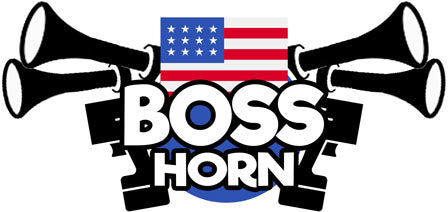
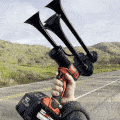
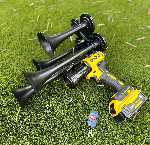
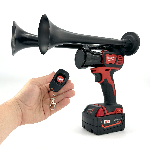
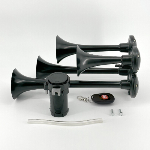






 https://bosshorn.com
https://bosshorn.com

























































